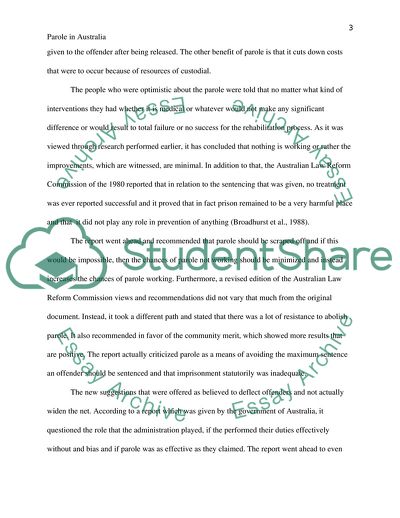Cite this document
(Parole in Australia Essay Example | Topics and Well Written Essays - 2000 words, n.d.)
Parole in Australia Essay Example | Topics and Well Written Essays - 2000 words. https://studentshare.org/law/1771523-parole
Parole in Australia Essay Example | Topics and Well Written Essays - 2000 words. https://studentshare.org/law/1771523-parole
(Parole in Australia Essay Example | Topics and Well Written Essays - 2000 Words)
Parole in Australia Essay Example | Topics and Well Written Essays - 2000 Words. https://studentshare.org/law/1771523-parole.
Parole in Australia Essay Example | Topics and Well Written Essays - 2000 Words. https://studentshare.org/law/1771523-parole.
“Parole in Australia Essay Example | Topics and Well Written Essays - 2000 Words”. https://studentshare.org/law/1771523-parole.


